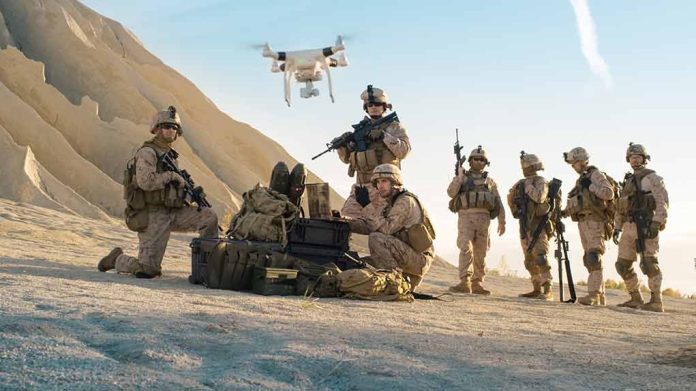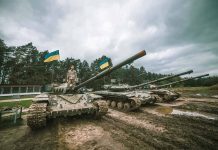
The U.S. military is researching drone tactics from the Ukraine war to improve its own training and strategy.
At a Glance
- Ukraine War is dubbed the first “drone war” and “StarLink War” due to the role of advanced tech.
- Drones allow systemic warfare with reconnaissance-strike capabilities.
- Ukraine shifted to smaller drones as Russian defenses improved.
- Electronic Warfare (EW) systems are effective in countering drones.
- U.S. military incorporates these insights into training and strategy, especially in varied terrains.
U.S. Military Analyzes Ukrainian Drone Warfare
The Ukraine War is considered a pioneering “drone war” and “StarLink War” due to the extensive use of advanced technology. Both Russian and Ukrainian forces deploy drones for tasks ranging from reconnaissance to offensive operations. This evolution in warfare tactics underscores the importance of these flying machines in modern conflicts.
Drones have enabled a wide-scale reconnaissance-strike complex, allowing for a new type of systemic warfare. Ukraine’s tactical skill and operational competence have proven invaluable in resisting Russian advances, despite Russia’s initial military advantages. The side that effectively harmonizes close and deep combat engagements is likely to gain the upper hand in this conflict.
Adaptation to Smaller and More Versatile Drones
Initially, Ukraine used larger drones like the Turkish TB2 Bayraktar. However, as Russian air defenses improved, Ukrainian forces shifted to smaller, more agile drones. These smaller drones, some obtained through grassroots crowdfunding efforts known as “dronations,” have proven adept at performing various military functions, including reconnaissance and precision strikes.
Additionally, Ukraine has significantly ramped up its domestic drone manufacturing capabilities, expanding from seven to at least eighty manufacturers. This shift has compressed the “kill chain,” improving the speed and precision of military operations. Neither Russia nor Ukraine has achieved air superiority, leading to an increased reliance on drones and other standoff weapons.
Electronic Warfare and Countermeasures
Both Russian and Ukrainian forces face challenges in countering drones. Electronic Warfare (EW) systems, which include jammers and spoofers, have emerged as the most effective defense mechanisms. These systems disrupt drone signals and control frameworks, making it difficult for operators to complete their missions.
“You cannot jam such a drone, because there is nothing to jam,” said a 20-year-old Ukrainian drone pilot from the 92nd brigade who goes by his call sign Darwin.
In response to these challenges, AI-guided drones are being developed to overcome EW hurdles. These advanced drones can identify targets and make decisions autonomously, thereby reducing the need for continuous human intervention. The concept of “drone war” has thus evolved from using large, remotely controlled aircraft to fast-paced, innovative scenarios, as seen in Ukraine.






















